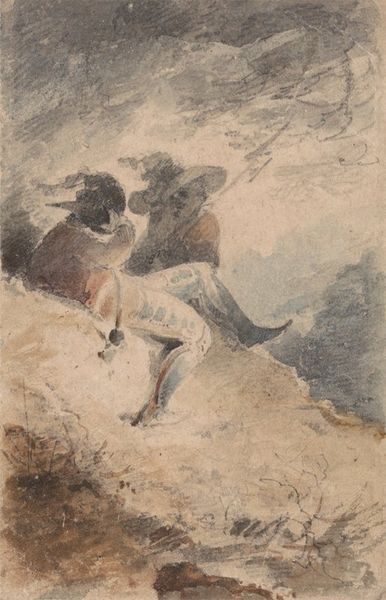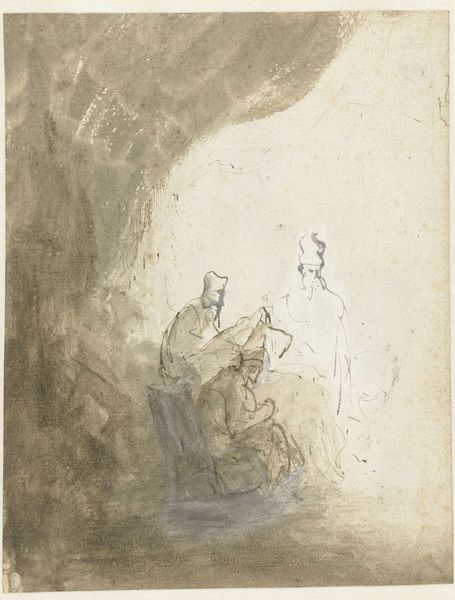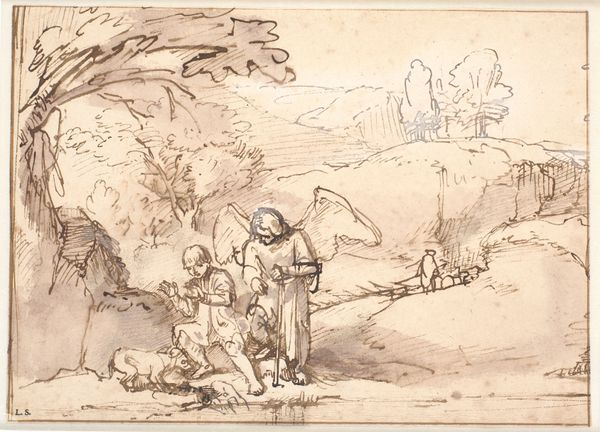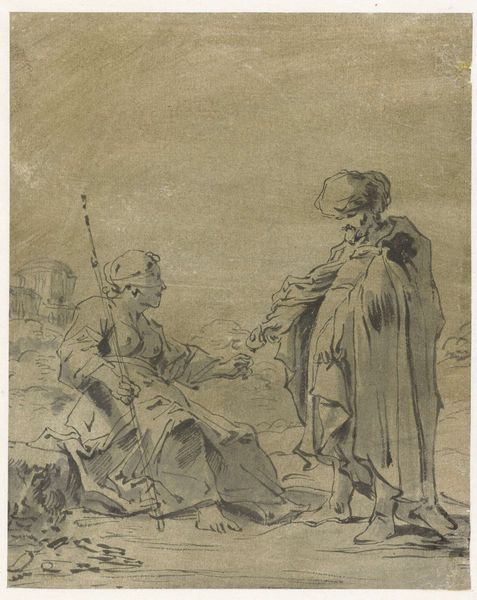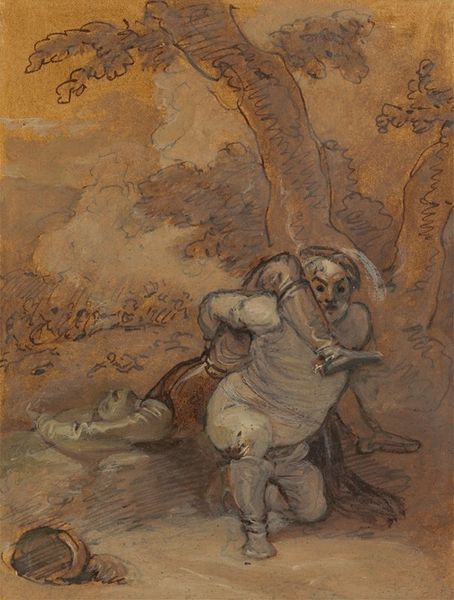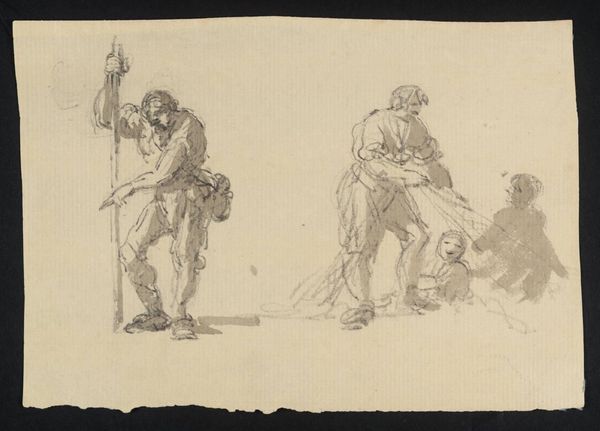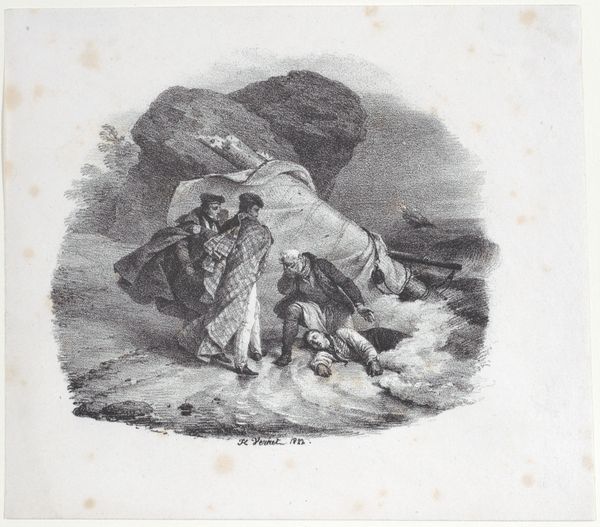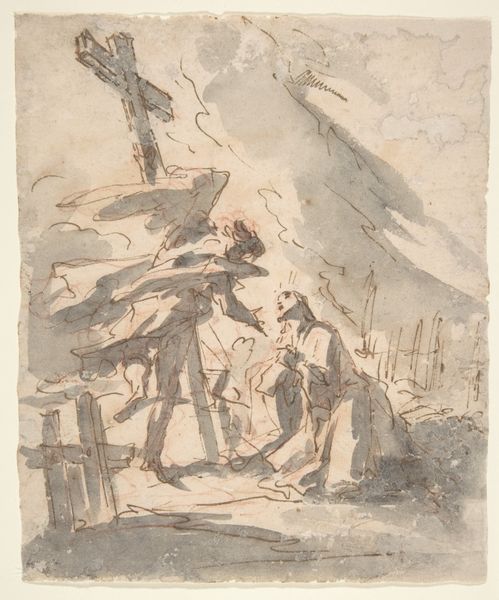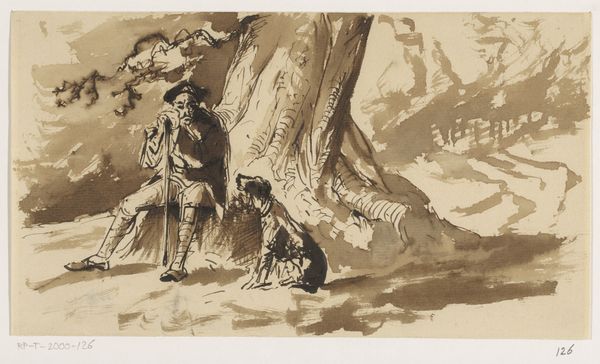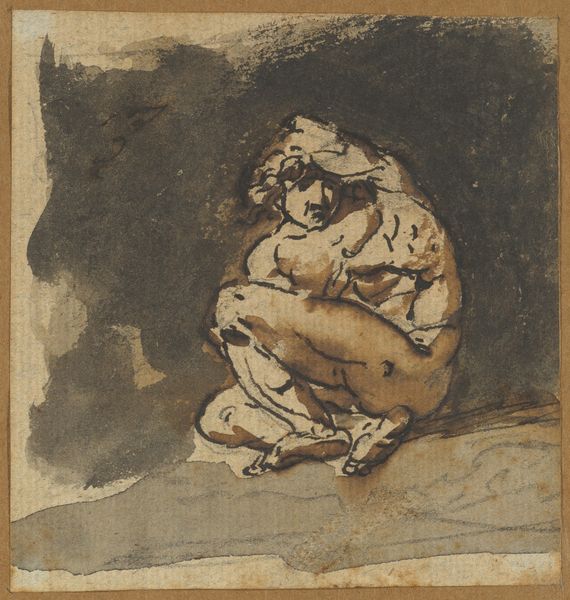
drawing, watercolor
#
drawing
#
landscape
#
figuration
#
watercolor
#
romanticism
#
watercolour illustration
#
history-painting
#
academic-art
Copyright: Public Domain: Artvee
Editor: Here we have Robert Smirke’s "Stephano and Trinculo with Caliban," a watercolor drawing from 1821. I'm immediately struck by how the figures are arranged in this desolate landscape. What historical context shaped Smirke's approach to illustrating Shakespeare? Curator: Well, the early 19th century witnessed a surge in Shakespearean adaptations across various art forms, largely due to the Romantic movement's fascination with intense emotion and the power of the individual. Think about the growth of theatre. What role do you think institutions such as the Royal Academy played in legitimizing subjects like this? Editor: I guess they would validate them? And also popularize these depictions for public consumption? So it’s like they gave academic credibility to the work? Curator: Exactly. History painting and literary subjects held a prominent position. Smirke was actually commissioned to create illustrations for a popular edition of Shakespeare's plays. Now, if we think about Caliban as a figure, how does this image either challenge or reinforce contemporary views of colonialism? Editor: That’s a great question! Given that Caliban is presented in such a vulnerable position here, maybe it could be read as critiquing the subjugation of indigenous populations? It certainly seems to be pulling him away from a monstrous stereotype. Curator: Precisely! And remember, images are never neutral. Smirke's choices contribute to the ongoing dialogue about power, representation, and the legacy of colonialism that was very alive at the time he created it. What are your thoughts on that reading? Editor: This helps me see beyond just the surface of the narrative, I now see how social and political currents influence even seemingly simple illustrations of classic stories. Curator: And hopefully how the dialogue on them helps further open these ideas up!
Comments
No comments
Be the first to comment and join the conversation on the ultimate creative platform.
